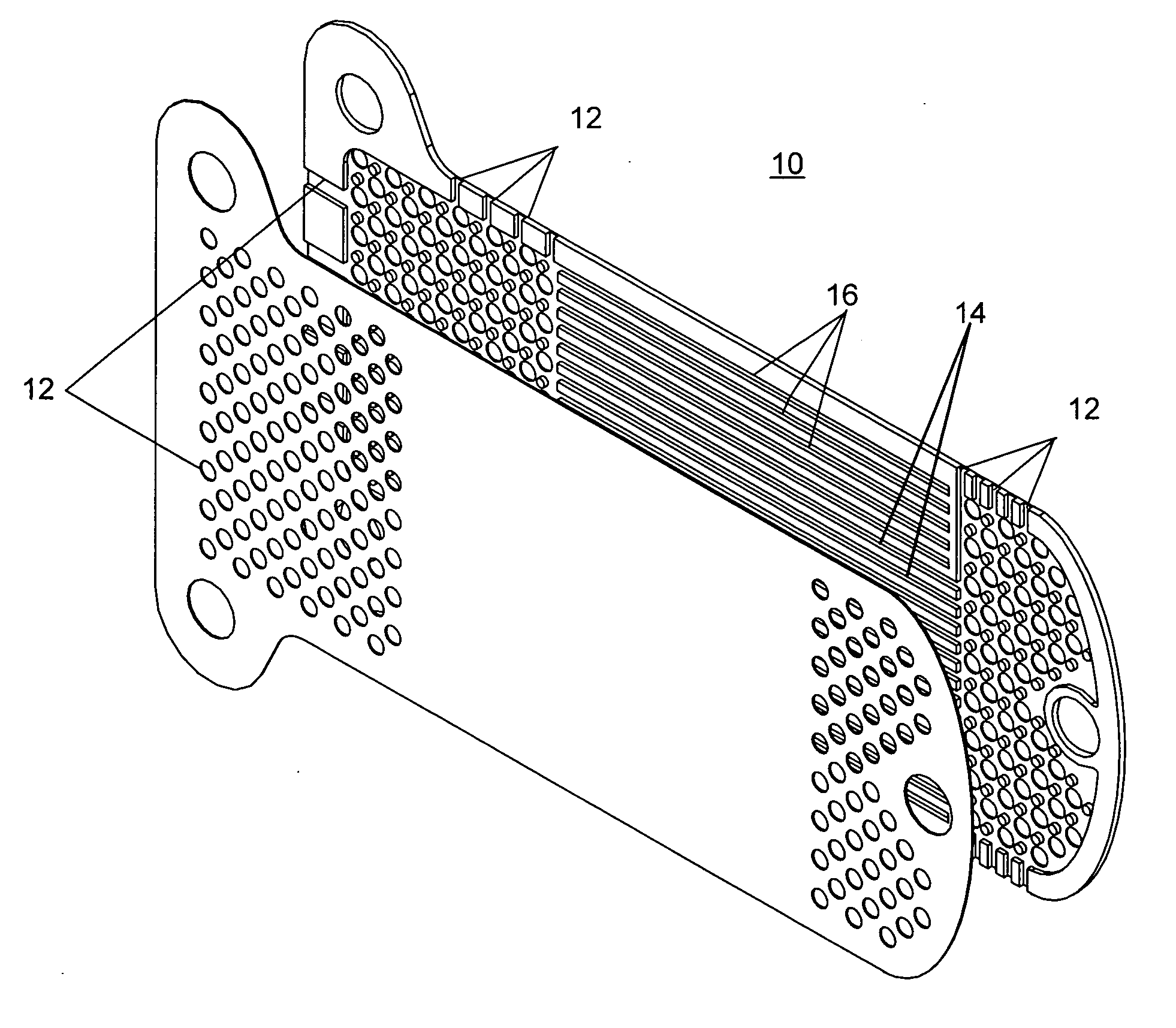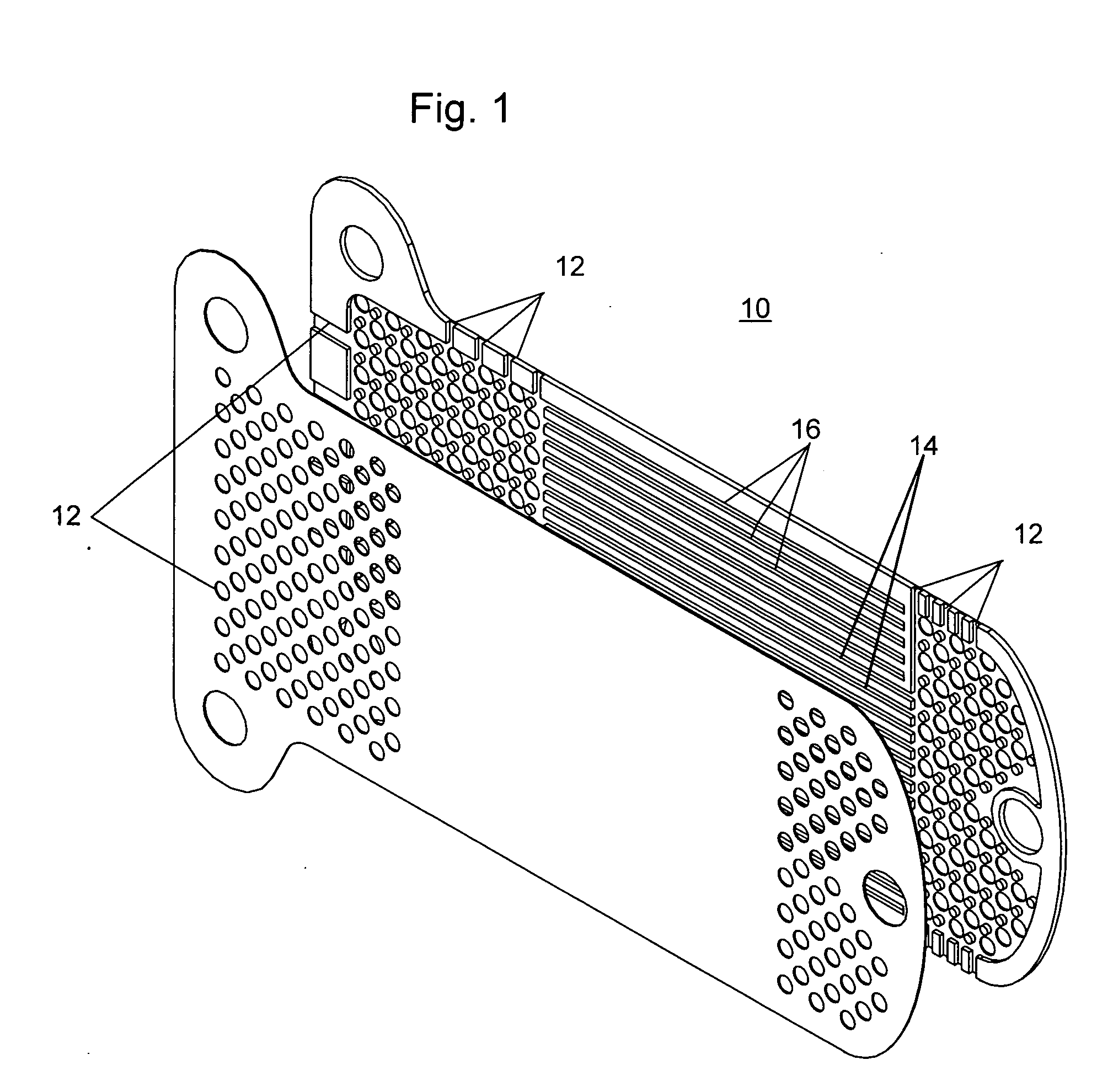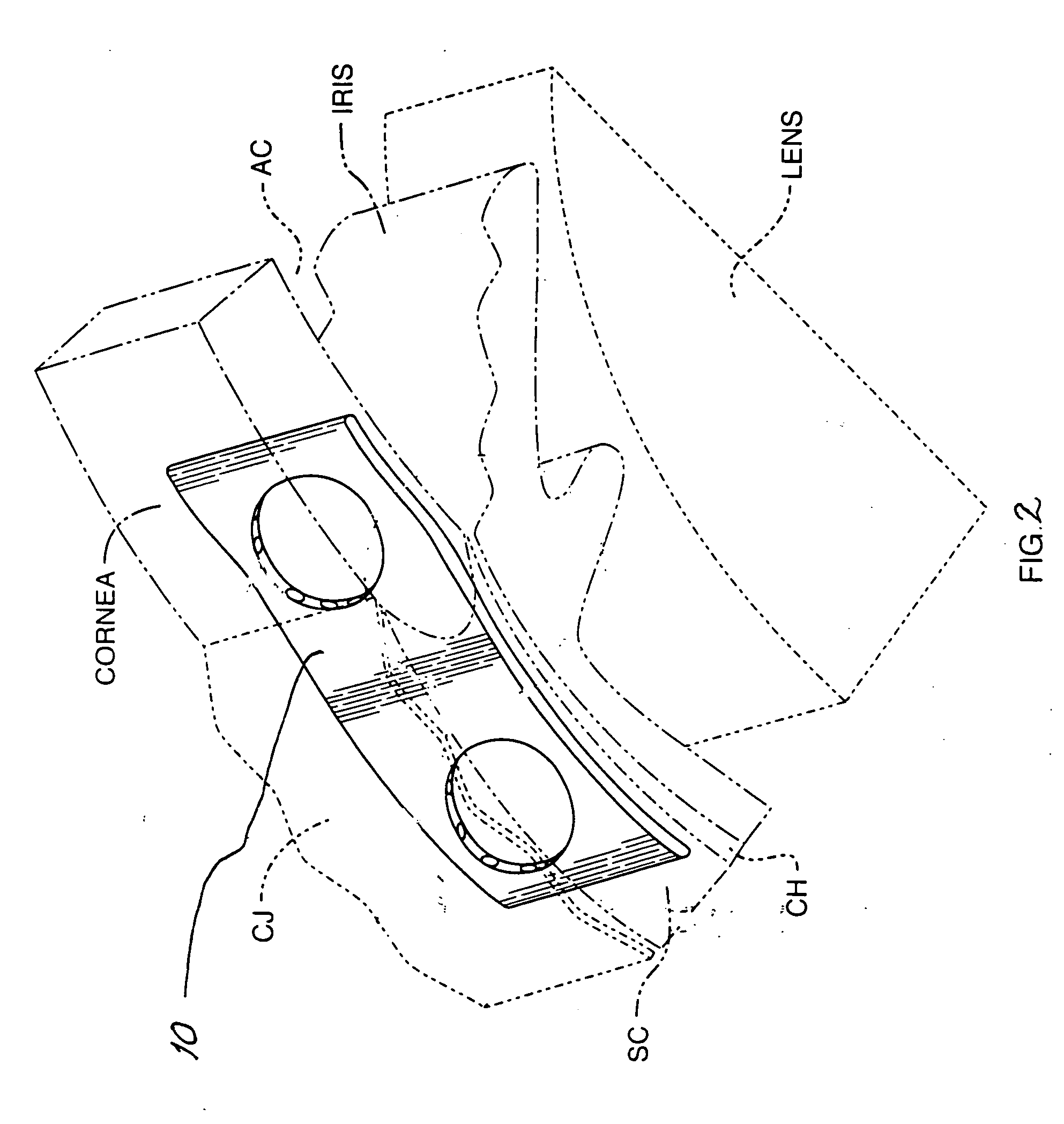Shunt for the treatment of glaucoma
a shunt and glaucoma technology, applied in the field of surgical treatment of glaucoma, can solve the problems of increased intraocular pressure, progressive damage to the optic nerve, and loss of both central and peripheral visual field, and achieve the effect of decreasing ocular hypertension
- Summary
- Abstract
- Description
- Claims
- Application Information
AI Technical Summary
Benefits of technology
Problems solved by technology
Method used
Image
Examples
Embodiment Construction
[0039] One embodiment of the present invention comprises a shunt 10 used for the treatment of glaucoma. The shunt 10, illustrated in FIG. 1, is configured from a biocompatible, non-toxic material. In one embodiment, this non-toxic biocompatible material is gold. Alloys of gold may be used, while in one embodiment 24 karat gold is used. The shunt 10 is, in one embodiment illustrated in FIG. 2, implanted in the suprachoroidal region of the eye or the supracilliary space with a first end disposed proximate to the anterior chamber. The shunt 10 comprises at least one channel through which aqueous fluid passes. Fenestrations 12 proximate to either end of the shunt 10 permit the entrance of fluid into the shunt 10 or egress of fluid from the channel 14. Apertures 12 in the shunt 10 may be opened by application of laser light of a suitable intensity and wavelength. Negative hydrostatic pressure in the supracilliary space results in a decrease in intraocular pressure when the shunt 10 intro...
PUM
 Login to View More
Login to View More Abstract
Description
Claims
Application Information
 Login to View More
Login to View More - R&D
- Intellectual Property
- Life Sciences
- Materials
- Tech Scout
- Unparalleled Data Quality
- Higher Quality Content
- 60% Fewer Hallucinations
Browse by: Latest US Patents, China's latest patents, Technical Efficacy Thesaurus, Application Domain, Technology Topic, Popular Technical Reports.
© 2025 PatSnap. All rights reserved.Legal|Privacy policy|Modern Slavery Act Transparency Statement|Sitemap|About US| Contact US: help@patsnap.com



